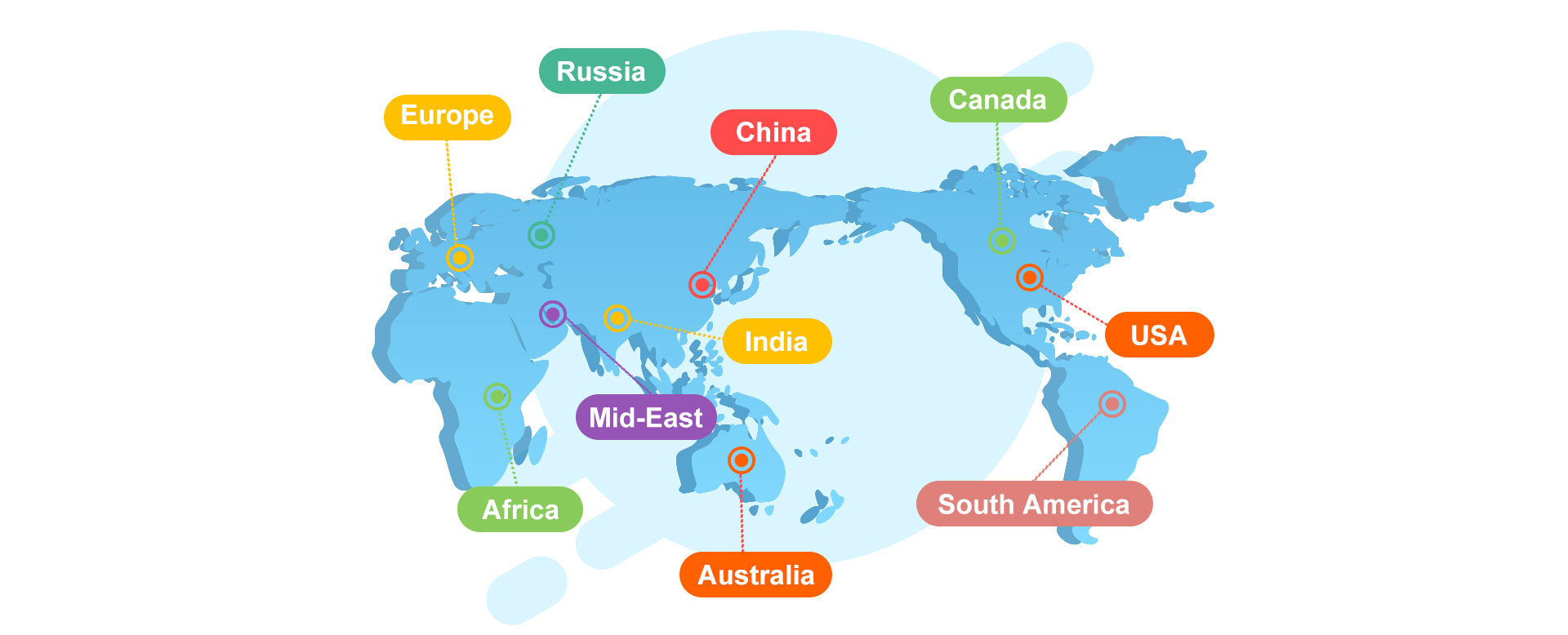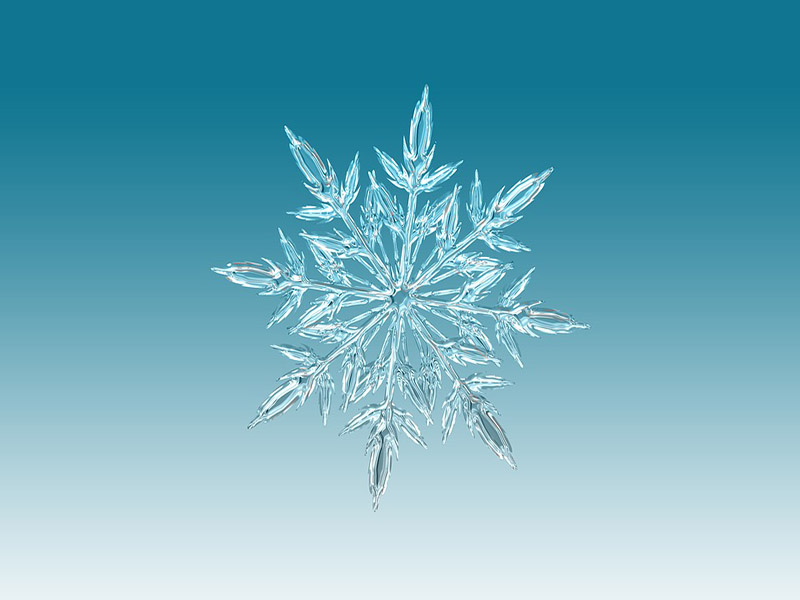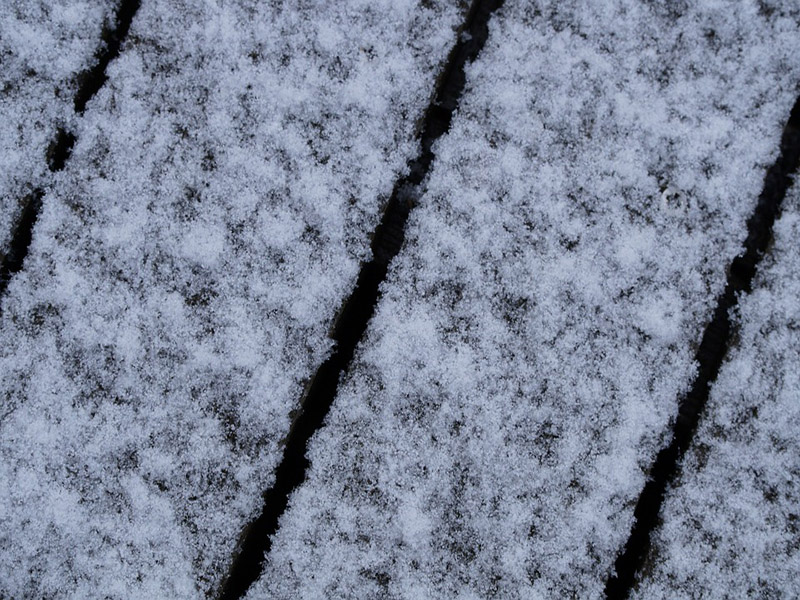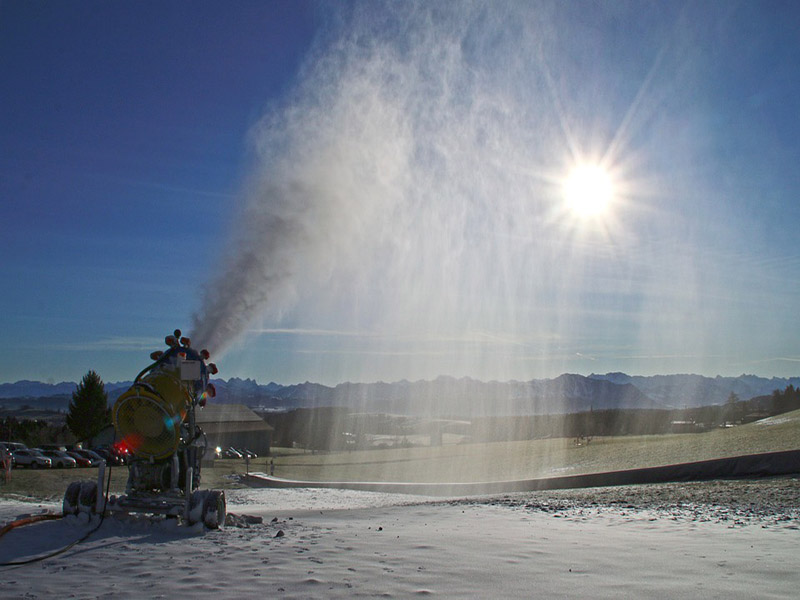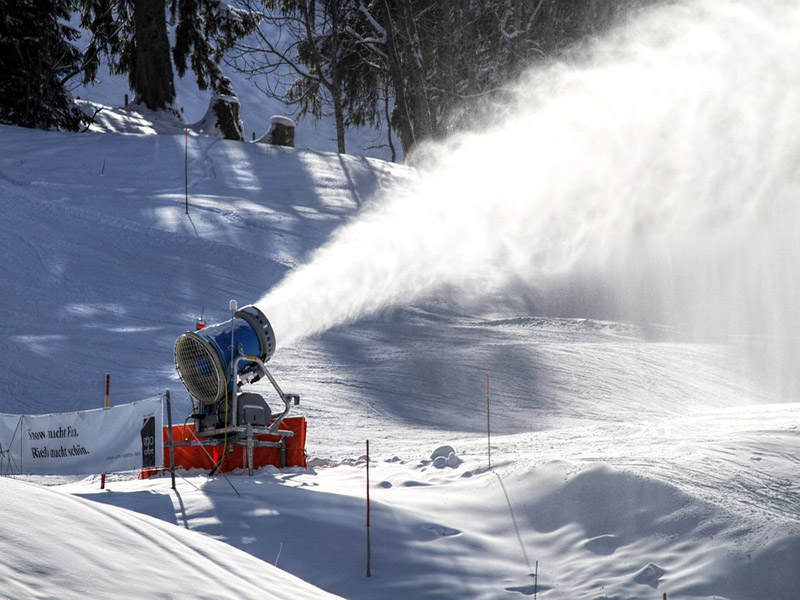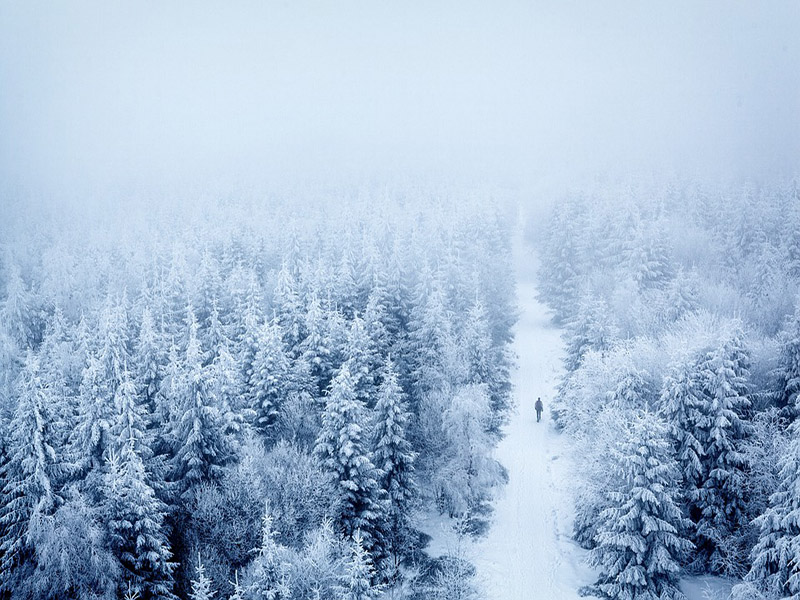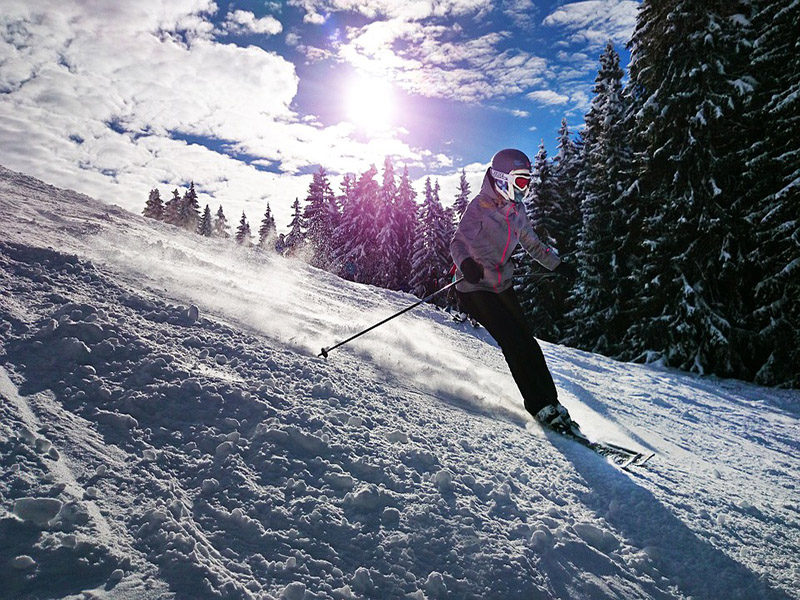Artificial Snow VS Natural Snow
Differences between artificial snow and natural snow
Artificial snow and natural snow crystals have a totally different form. Natural snow crystals are delicate and pointy, which is what makes them stick together and form snowflakes.
Natural snow falls from a great height, which gives time for the crystals to drift together and create large, fluffy snowflakes with air between the crystals.
In contrast, to make artificial snow, water droplets are pushed through a snow cannon at high speed and sprayed out the other end.
The resulting crystals are round instead of pointy, and the snow is somewhat denser because it doesn’t trap as much air between the crystals.
History of artificial snow making machine
In 1934, Warner Bros. technical director Louis Geib conjured a cold and wet blizzard on a sunny backlot in Burbank. His invention—the first known snowmaking machine—consisted of three rotating blades that shaved ice from a 400-pound block and a high-powered fan that blew the resulting particles into the air.
Art Hunt, Dave Richey, and Wayne Pierce invented the snow cannon in 1950, but secured a patent sometime later. In 1952, Grossinger’s Catskill Resort Hotel became the first in the world to use artificial snow. Snowmaking began to be used extensively in the early 1970s. Many ski resorts depend heavily upon snowmaking.
Which one lasts longer, artificial or natural snow?
Due to its low density, natural snow doesn’t retain cold as well, and it melts faster than we powder lovers would like! Artificial snow is a lot more compact, which shields it better against rising temperatures.
Unfortunately, we haven’t yet figured out a way to produce fine powder snow with a snow cannon, and we don’t know how to counteract the high density of artificial snow. If you want to ski powder you’ll have to keep a close eye on the snow forecast!
Are there any limitations to making artificial snow?
Every skier and snowboarder hangs on the weather forecast each autumn, hoping for a few good early snowfalls to get the season off on a good foot.
When snow isn’t forthcoming, we at least hope that it will be cold enough to produce artificial snow (which incidentally makes a pretty good sticky base for natural snowfalls later on).
To produce artificial snow, in most cases, temperatures must be below freezing, ideally for at least a few days. Low humidity is also helpful.
Which one is better for skiing on?
Both types of snow are fine for skiing. Artificial snow contains more water, which makes it go icier quicker but also makes it more resistant to rain. If you like going fast, then artificial snow is better.
On the other hand, powder lovers will say there is nothing like natural snow. Even when it’s not in powder form, natural snow is lighter and drier and won’t turn into slush as easily.

